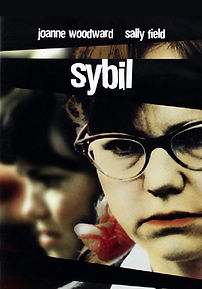
The Road to Research
This is the story of how my research project came to life. It is an overview of the events which shaped the proposal, as well as the context and methodology for my research.
My work in AP Research actually began almost a year prior, in AP Seminar. As part of the individual paper and presentation, I conducted a literature review on the effect of sound in films, and found a great interest in studying the film industry. So, when tasked with the "Topic Speed Dating" assignment over summer, I knew exactly where to start. I explored sources such as films and television shows, as well as studies within the industry.
This brought me to an intersection of ideas: psychology and film, at which point I began looking into anxiety disorders. I spent a couple of weeks determining how I could approach this area of interest, but later strayed from the idea, as I wasn't certain of the viability. This is how I landed on Dissociative Identity Disorder, abbreviated DID, and formerly known as multiple personality disorder. It is a major mental health condition referring to a person with two of more identities. DID was first discovered in 1791, and it is estimated that 115 million people have a current diagnosis. The real concern, however, is that approximately 35% of DID patients were treated for schizophrenia before receiving an accurate diagnosis. This is generally related to one of two factors: misinterpretation or misinformation, the later originating from media.
That is where my project truthfully began, and I finally formed my research question: how accurate are the portrayals of Dissociative Identity Disorder in films from 1950 to 2022 as compared to relative and historical knowledge of the associated symptoms?


In order to select my films, I had to go through a series of careful criteria. To briefly summarize, I searched for films on IMDb, determined the viability based on screen time and accessibility, chose the two highest grossing films from each decade, and then randomized the order in which they would be analyzed. This left me with the following list of films, in order of viewing.
My methodology was rooted from a study titled "Dementia in the Movies: The Clinical Picture," in which researchers determined the accuracy of dementia depictions in film. My approach, similarly, is to view each film and note the time and mechanism of any portrayals of Dissociative Identity Disorder. Data will be collected in a series of charts when watching the films. Once each of the films has been analyzed, I will utilize symptom lists from case studies of various decades to determine whether the portrayals in a given film were relative to the knowledge at the time the film was produced. My ultimate goal is to find a progression of clinical knowledge reflected in the movies.
The film posters on this page were provided by IMDb.
1. Footprints on the Moon (1975)
2. David and Lisa (1962)
3. Primal Fear (1996)
4. Spider-Man: No Way Home (2021)
5. The Mummy (2017)
6. Psycho (1960)
7. Lizzie (1957)
8. Fight Club (1999)
9. The Three Faces of Eve (1957)
10. Moon Knight (2022)
11. Shutter Island (2010)
12. Sybil (1976)
13. 10 to Midnight (1983)
14. Me, Myself & Irene (2000)
15. The Hours (2002)
16. Dressed to Kill (1980)